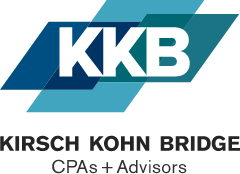Here are four considerations:
1. LIFO inventories. C corporations that use last-in, first-out (LIFO) inventories must pay tax on the benefits they derived by using LIFO if they convert to S corporations. The tax can be spread over four years. This cost must be weighed against the potential tax gains from converting to S status.
2. Built-in gains tax. Although S corporations generally aren’t subject to tax, those that were formerly C corporations are taxed on built-in gains (such as appreciated property) that the C corporation has when the S election becomes effective, if those gains are recognized within five years after the conversion. This is generally unfavorable, although there are situations where the S election still can produce a better tax result despite the built-in gains tax.
3. Passive income. S corporations that were formerly C corporations are subject to a special tax. It kicks in if their passive investment income (including dividends, interest, rents, royalties, and stock sale gains) exceeds 25% of their gross receipts, and the S corporation has accumulated earnings and profits carried over from its C corporation years. If that tax is owed for three consecutive years, the corporation’s election to be an S corporation terminates. You can avoid the tax by distributing the accumulated earnings and profits, which would be taxable to shareholders. Or you might want to avoid the tax by limiting the amount of passive income.
4. Unused losses. If your C corporation has unused net operating losses, they can’t be used to offset its income as an S corporation and can’t be passed through to shareholders. If the losses can’t be carried back to an earlier C corporation year, it will be necessary to weigh the cost of giving up the losses against the tax savings expected to be generated by the switch to S status.
Other issues to explore
These are only some of the factors to consider when switching a business from C to S status. For example, shareholder-employees of S corporations can’t get all the tax-free fringe benefits that are available as a C corporation. And there may be issues for shareholders who have outstanding loans from their qualified plans. These factors must be taken into account in order to understand the implications of converting from C to S status.
If you’re interested in an entity conversion, contact us. We can explain what your options are, how they’ll affect your tax bill and some possible strategies you can use to minimize taxes.
© 2024
For more helpful tax and accounting articles, or to sign up for our newsletter, please visit our KKB Insights page. If you have any questions, please contact us.




Advantages of keeping your business separate from its real estate
/in Tax/by KKB CPAsIt may be advantageous to separate ownership of a business’s real estate from the business. But it isn’t always advisable. Here’s a look at the issues. Continue Reading Advantages of keeping your business separate from its real estate
Cutoffs: When to report revenue and expenses
/in Tax/by KKB CPAsDoes your company follow the cutoff rules? Loose interpretation of the accounting rules can lead to errors and unexpected audit adjustments. Here’s how to get it right. Continue Reading Cutoffs: When to report revenue and expenses
Help ensure your partnership or LLC complies with tax law
/in Tax/by KKB CPAsGuaranteed payments to partners and payments to retired partners are just two of the tax issues that should be addressed in your partnership (or LLC operating) agreement. Here are the details. Continue Reading Help ensure your partnership or LLC complies with tax law